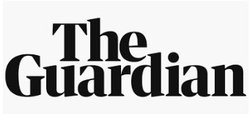
Joel Snape
July 10, 2024
Struggling to fit everything in? Here’s how to cross off all the jobs on your list ... without really trying.

Illustration: Ryan Gillett/The Guardian
‘If you get a tough job … and you haven’t got a way to make it easy, put a lazy man on it,” a Chrysler executive named Clarence Bleicher once explained to a US Senate committee on productivity. “After 10 days, he will have an easy way to do it.”
That quote is often misattributed to Walter Chrysler or Bill Gates. I know this because, fundamentally, I am a lazy man: left to my own devices, I will happily spend 20 minutes on Quote Investigator rather than hoovering the living room or, er, writing a feature about productivity.
The problem? I have loads to do. Like many self-styled productivity bros, my weekly schedule includes several gym sessions, a Brazilian jiujitsu habit, practising the piano, writing a newsletter and fostering a couple of side hustles – but I also have a full-time job and a seven-year-old to worry about.
While I collect productivity advice like some people collect fridge magnets or Funko Pop! figures, I am ruthless about the tips I actually follow. I don’t journal, meditate or take cold showers; I don’t have 20 productivity apps or an expensive timer. I have a handful of “rules” and heeding them works … pretty well.
So, if you are struggling to fit it all in, take some advice from Bleicher, grab some elastic bands (yes, really) and start with the laziest yet life-changing thing you can do.
Write everything down
everything:everything : shopping lists, appointments, jobs that need to be done, ways to entertain a bored child, ideas for that novel you will write if you ever get the chance, all the films and TV shows you want to watch and all the books you want to read.
Dave Allen, the author of Getting Things Done, suggests doing this with a complicated system of index cards, but technology has moved on. Put it all in one or two big spreadsheets with separate tabs. It’s incredibly freeing: instead of juggling dozens of ideas in your head, you are outsourcing them to a document. It also cuts down on evenings spent trying to find something to watch across the myriad streaming platforms. But there is one thing I always do in a physical notebook.
Ditch the to-do list for a ‘first things’ list
The problem with most to-do lists is that they don’t take into account all the stuff you need to do them. “Do tax return” doesn’t work if you haven’t got your receipts in order; “sort out school application” doesn’t work if you don’t know whom to email.
With a “first things” list, you split an important task into smaller and smaller chunks until you are left with one “first thing” that you can do immediately (and preferably in less than two minutes). Make a list of those things when you sit down in the morning and it’s easy to start building momentum for the rest of the day.
Bonus suggestion: rather than crossing things off your list, put a checkbox next to each item. It takes about 10 seconds longer, but it’s easier to see what you have done – and it’s immensely satisfying.
Work out your attention timetable
We all have bits of the day when we are fired up and bits when we are not at our best. Maybe you don’t really get going until noon, or your concentration slips after four o’clock.
Grab a bit of paper and map out an average working day – start and finish times, breaks, any personal stuff you have to do – and write down when you are most attentive or sluggish. From here, you should be able to calculate the best times for difficult or creative tasks (and work out when you should stick to emails or change the printer cartridge). Obviously, full-time jobs aren’t always respectful of a 3pm lull, but if you have a bit of leeway, try to steer your most tedious tasks towards the time of day when your brain slows down.
Use the work-or-nothing rule
Raymond Chandler got a lot done. He didn’t start writing detective fiction seriously until the early 1930s, when he was in his 40s, but then wrote seven novels and a handful of screenplays, including two that were nominated for Academy Awards.
His advice? “The important thing is that there should be a space of time … when a professional writer doesn’t do anything else but write,” he once said. “He doesn’t have to write, and if he doesn’t feel like it, he shouldn’t try. He can look out of the window or stand on his head or writhe on the floor, but he is not to do any other positive thing, not read, write letters, glance at magazines or write cheques.”
Of course, in Chandler’s day, it was easier to avoid distraction; now, it’s likely that whatever device you are writing on can connect you with limitless amounts of stuff to distract you. One option is to work in notebooks or without a connection to the internet. Another is to …
Put an elastic band on your phone
We have all heard the usual phone advice – put it in a drawer, switch on airplane mode, put a picture of your kid’s face on the lock screen to remind you that you are supposed to be planning for their future instead of doomscrolling – but it’s all a bit too easy to ignore. I can’t ditch my phone entirely – what if the boy’s school wants something urgently? – but anyone who thinks that my smiling child might work as a disincentive hasn’t met me (or him).
The only thing that works for me is using a literal barrier in the shape of an elastic band. Wrap one around your screen and it works as a tactile reminder that it’s there for emergencies only. This tactic also helps with the next idea.
Set kettle deadlines
As a younger man, I used to use boiling the kettle as an excuse to do a handful of press-ups or squats (I worked from home, obviously). Now, as a perma-tired dad, I spend the two or three minutes it takes seeing how quickly I can wipe down the kitchen surfaces or sweep the floor. Another option is to use cups of tea as a brainstorming break. If you are stuck on a work-related problem, the change of venue from desk to kitchen can be enough to get things rolling again.
Try ‘progressive’ Pomodoros
Productivity coaches swear by the Pomodoro method, named after those tomato-shaped timers popular in high-end kitchens. The idea is that you work for a solid 25 minutes, take a break for five, then come back reinvigorated for the next burst of work.
The problem? Sometimes, 25 minutes feels like too much – or you are in the zone and don’t want to stop.
An idea I have borrowed from the YouTube creator Mike Rapadas is matching your blocks of work to how focused you feel. Start with a five-minute burst, then carry on if you still feel focused, or take a very short break if you don’t. As you get into the flow, you can make your work blocks longer, until you are cranking out half an hour of intense productivity at a time.
Use If > Then thinking
This one is about programming your brain to behave better. The idea is that you set up cues that prompt your planned behaviour, rather than making decisions as you go. If you don’t make it to the gym after work, for instance, then do 50 press-ups and 100 squats at home. This saves you from making difficult decisions when you are already tired, stressed or hungry – and hopefully ensures you make better ones.
Say ‘I get to’, not ‘I have to’
This is another way to change your thinking: rather than insisting that you go to the gym, practice the clarinet or call your mum, remind yourself that you get to do those things. After all, if you have the time and bandwidth to do those things, it’s often a privilege. Call your mum!
Cut out ‘zero days’
I saw this posted by a commenter on Reddit about a decade ago and now people are building their lives around it. The basic concept is that a “zero day” is one where you don’t do anything towards whatever project you are working on, while a “non-zero day” is one where you do, well, something: write one line, practice one scale, do one press-up. The point is to keep the momentum, build the habit and get where you are going. I keep track of non-zero days across everything I am juggling on one bit of paper – a tick for each thing – and try to keep the streak alive across all of them.
Start it now, fix it later
This is the most important concept I have come across for getting things done. If you have done everything above and you still don’t know where to start on a project, the most important thing is to start and tweak as you go. Go to the gym today and worry about how well it worked your abs this evening. Get a first draft of something done now and fiddle with it tomorrow. Start the thing you want to do and work out the rest in future.


